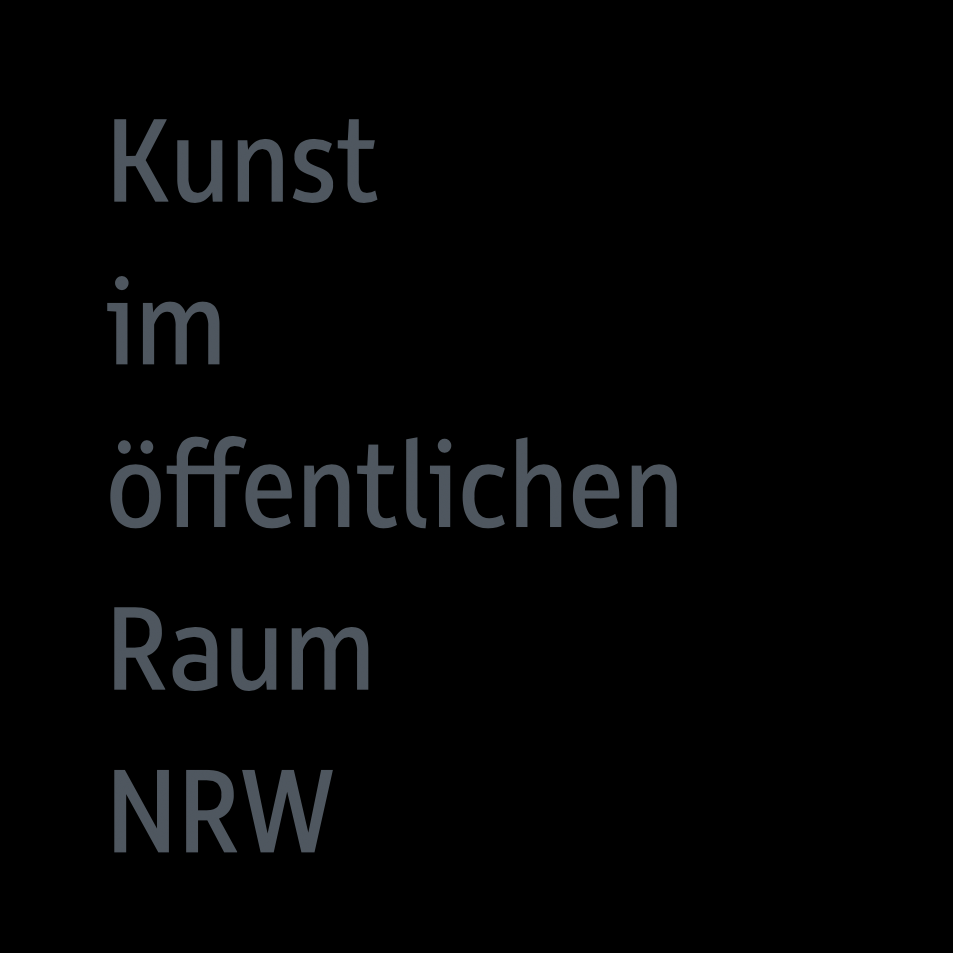Zwei einander durchdringende Scheiben / Two Intersecting Discs
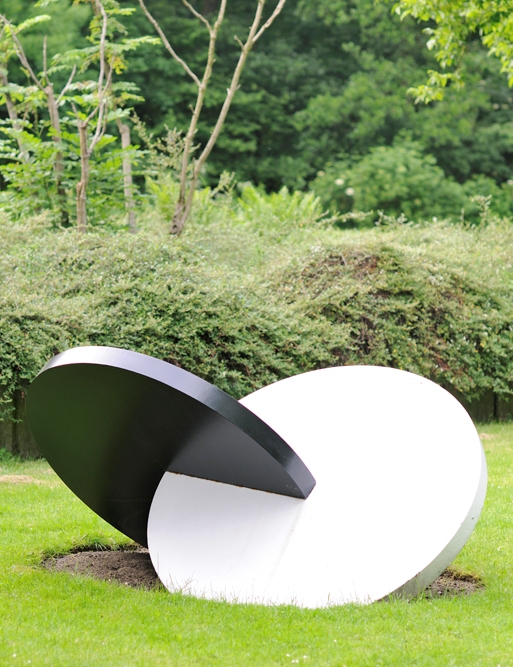
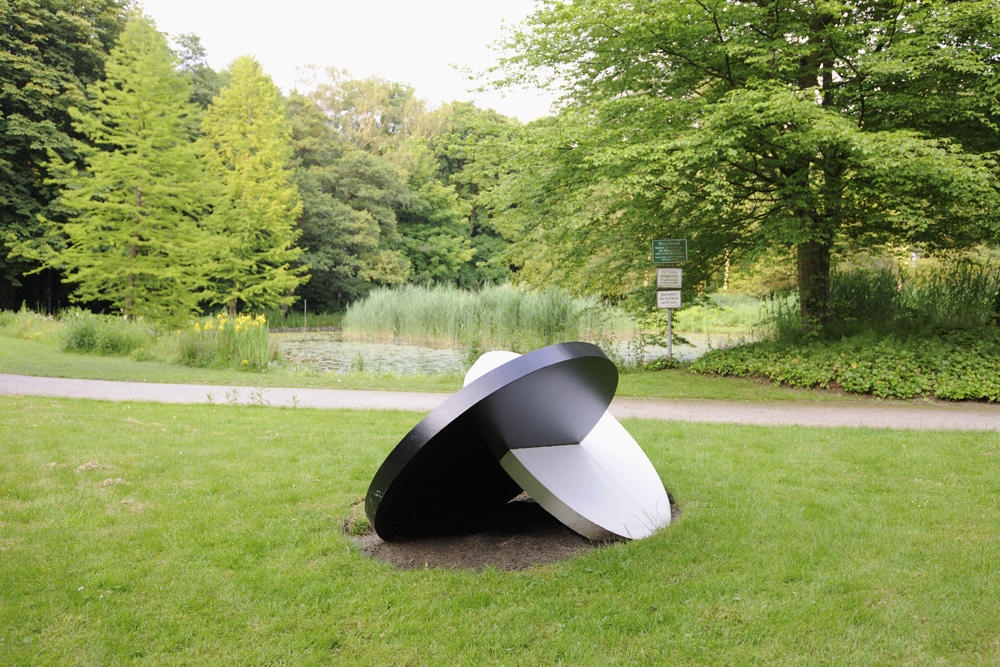
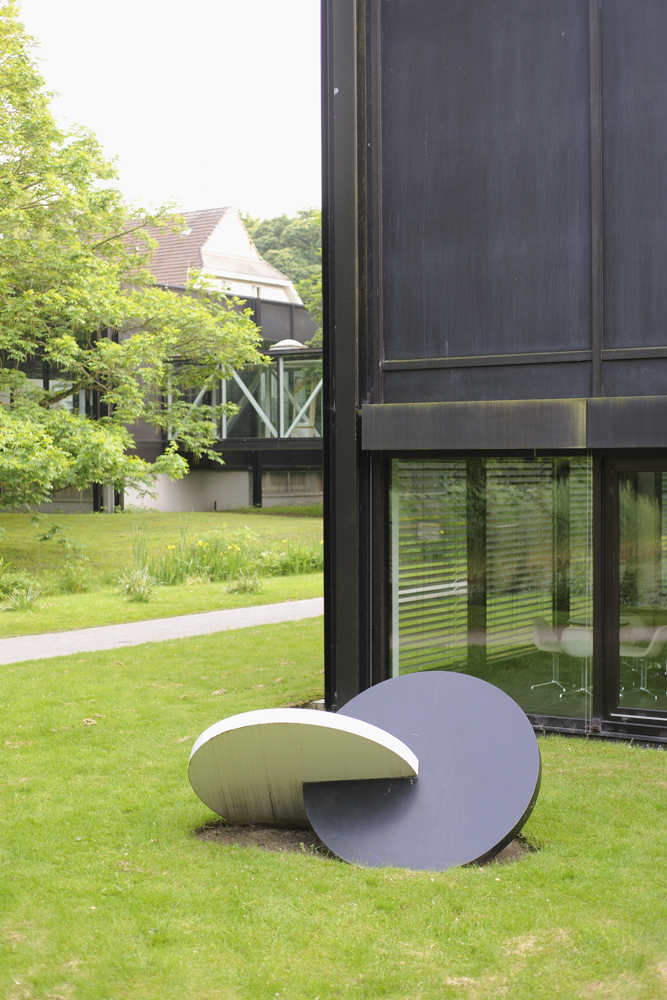
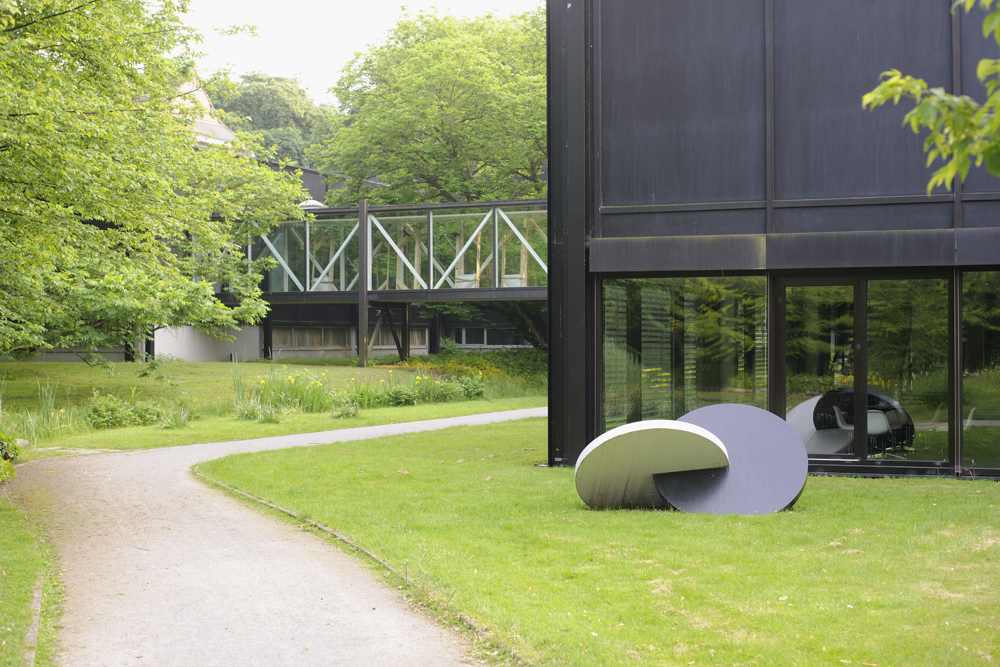
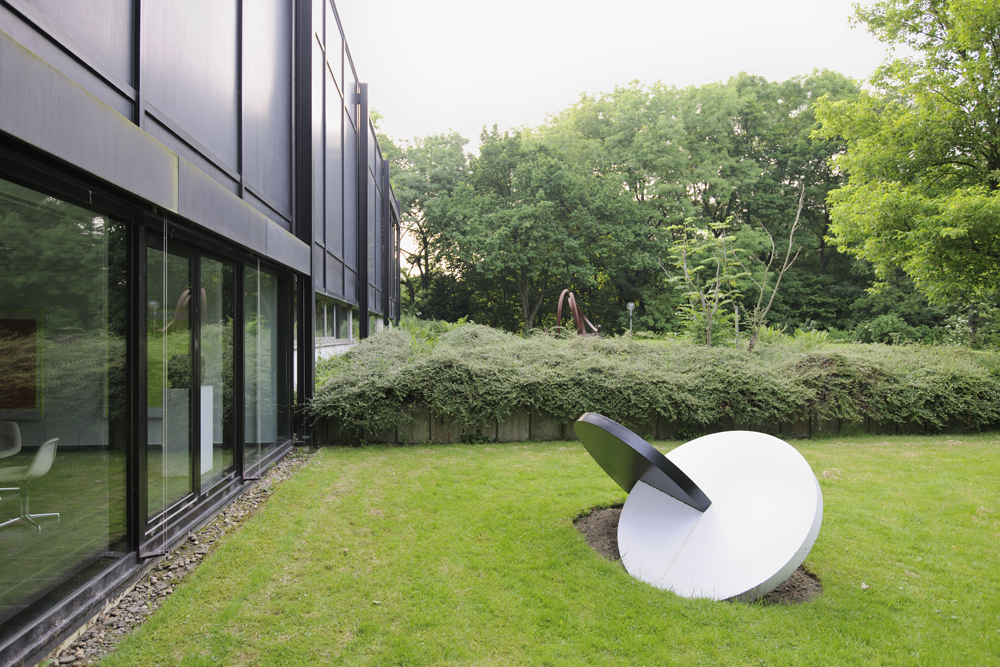
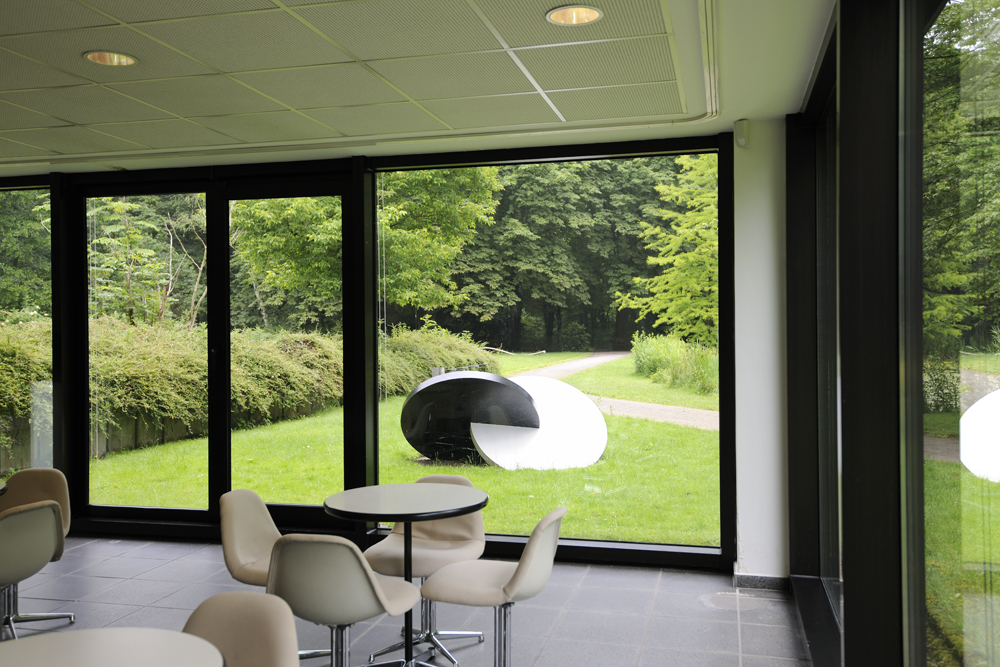
Hermann Glöckner’s Coupled Discs stand out in his oeuvre and include both figurative and abstract works. In pursuit of the laws of visual perception, the Dresden artist began producing Constructivist art in 1930, but was excluded from the official art scene during the Nazi era and then in the GDR. After first gaining recognition in West Germany, the restoration of his reputation as an artist in the GDR did not begin until his 80th birthday in 1969.
This sculpture was created based on a smaller wooden model and features a white and a black disc. The discs have been pushed together towards the center at right angles and support each other so that they stand off the ground. In this way, black and white elements can be seen as opposites that attract and complement each other, akin to the Chinese yin and yang. At the same time, they merge into a unified entity. From two simple geometric forms, a complex structure emerges.
Hermann Glöckner
← Zur Startseite
Bottrop, Sculpture park at the Josef Albers Museum Quadrat, Im Stadtgarten 20
